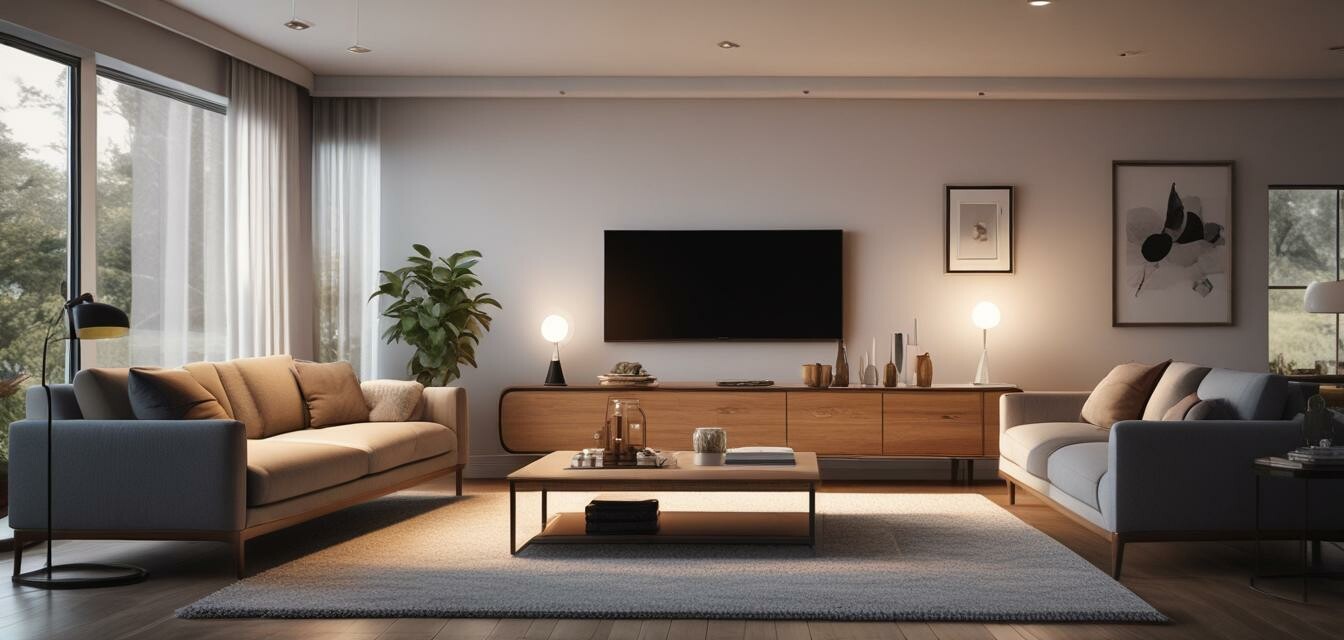
Energy Efficient Lighting: Best Practices
Key Takeaways
- Choosing the right fixtures and bulbs can significantly reduce energy consumption.
- LED bulbs are the most energy-efficient lighting option.
- Consider natural lighting and its impact on your energy usage.
- Regular maintenance of fixtures can improve their efficiency.
- Smart lighting options enable better control of light usage.
Lighting plays a vital role in our daily lives. Not only does it enhance the ambiance of our homes, but it also significantly affects our energy consumption. By adopting energy-efficient lighting practices, you can save money on your electricity bill and contribute to a greener planet. In this article, we'll explore best practices for optimizing lighting in your home, from choosing the right fixtures to selecting energy-efficient bulbs.
Why Choose Energy Efficient Lighting?
Energy-efficient lighting is more than just a trend—it's an essential choice for homeowners looking to reduce their energy consumption. Here are some benefits of using energy-efficient lighting:
- Lower electricity bills
- Reduced environmental impact
- Longer lifespan of bulbs and fixtures
- Improved quality of light
Types of Energy-Efficient Lighting
When it comes to selecting light sources, there are several energy-efficient options available. The following table compares different types of bulbs commonly used in energy-efficient lighting:
| Type of Bulb | Energy Usage (Wattage) | Lifespan (Hours) | Brightness (Lumens) |
|---|---|---|---|
| LED | 8-12 W | 15,000-50,000 | 800-1600 |
| CFL | 13-15 W | 7,000-15,000 | 800-1200 |
| Incandescent | 60-100 W | 750-2,500 | 800-1600 |
Best Practices for Energy Efficient Lighting
Implementing energy-efficient lighting in your home involves more than just switching out bulbs. Here are some best practices to consider:
1. Choose LED Bulbs
When it comes to energy efficiency, LED bulbs are the clear winner. They not only use less energy but can also last significantly longer than traditional incandescent bulbs. For more tips on selecting LED lights, check out our Tips and How-to Articles.
2. Utilize Natural Light
Engaging and utilizing natural light is an excellent way to cut back on energy usage. Consider the layout of your home and place mirrors strategically to reflect light. Open curtains during daylight hours to let the sunlight in.
3. Use Dimmers and Sensors
Dimmers allow you to control the intensity of your light, while motion sensors can turn lights on and off based on occupancy. This helps to minimize energy waste when rooms are unoccupied.
4. Regular Maintenance
Regularly cleaning your fixtures and bulbs can ensure maximum light output. Dust and debris can drastically reduce the brightness of the light, causing you to use more energy than necessary.
5. Mind Your Fixtures
Choosing the right fixtures for your bulbs is essential. Use fixtures that are designed for energy-efficient bulbs to maximize their effectiveness. Additionally, be aware of the color temperature of bulbs, as some are warmer or cooler in tone, impacting the feel of a room.
Smart Lighting Solutions
In the age of technology, smart light solutions offer excellent ways to control energy usage. Consider investing in smart bulbs or systems that allow you to control the lights through an app on your phone or voice-controlled devices. These options often come with settings for scheduling lighting, dimming, and color adjustments, which can contribute to even greater energy savings.
Conclusion
Optimizing your lighting choices not only enhances your home environment but significantly contributes to reducing your energy consumption. By following these best practices for energy-efficient lighting, you'll not only save money but also make a positive impact on the environment. Whether you're exploring air conditioners or looking at buying guides, implementing energy-efficient solutions is a step in the right direction.
Pros
- Significantly reduces energy costs.
- Longevity of bulbs means fewer replacements.
- Improves quality of ambient light.
Cons
- Initial cost can be higher for energy-efficient options.
- Some people prefer the warmth of traditional incandescent bulbs.
